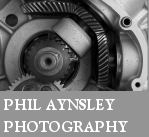


The marque originated from the name of the founder - Samuel Batson, although early advertisements depicted a cricket bat and the mammal.
1901 After many years as a cyclist, Samuel Batson became interested in motorcycles. From their study he patented many improvements, built a demonstration model and approached manufacturers - with little success.
1902 Batson set up his own business at Kingswood Road, Penge, London to build machines - one of which was soon setting records and ridden by F. W. Chase. The machine was fairly primitive in design, with a De Dion engine. An optional sprung sub-frame was also available.
1903 Following on from its success the previous year, BAT earned the slogan 'Best After Test'. For that year the engine was an MMC and it was fitted with pedals. T. H. Tessier joined the firm and went on to achieve many records riding BAT machines.
1904 A forecar model was produced, powered by a water-cooled engine and some machines had Minerva engines.
1905 Tessier bought the company after Batson failed to find a good market.
1906 Engine use switched to JAP, Stevens and Soncin. For road use there were singles and V-twins with the option of either a rigid or sprung frame.
1907 Tessier entered the first Isle Of Man TT, but retired.
1908 A BAT came second at the TT, in the twin-cylinder class, but that was the best they would ever do in the Island. By now BAT was known for its speed and comfort. It was also successful at Brooklands, as its build suited the track.
1909 The range increased to include a 2½ hp lightweight model and larger singles with mechanically operated inlet-valves, while the twins still had the older AIV type. Also listed were racing versions, sidecar models and a quadricycle - a motorcycle with a removable sidecar and two steering front wheels.
1910 Production problems forced the company to reduce the range to three models.
1912 The concentration was now on twins and a countershaft gearbox with kickstarter and clutch in the rear hub had replaced the two-speed P and M gear.
1913 The singles were dropped; the TT model had ohv and the 8hp had all-chain drive. More models appeared and all were V-twins with variations of transmission. Sporting success continued and one of the machines managed to come in seventh in the Senior TT.
WWI. Some machines were sold to Russia although payment was not always forthcoming.
1917 The company stopped building motorcycles and turned to producing shell cases.
1919-1921 The name returned in 1919, in the form of both 6hp and 8hp V-twin models with three speeds and chain drive. Those machines were constructed from a variety of spares on the store shelf, and a 4hp V-twin appeared in 1921.
1922 The company was taken over by Tessier's sons.
1923 The twin models were joined by a 2¾hp single. The company took over another manufacturer, Martinsyde.
1925 The make went on to become BAT-Martinsyde. Its two twins were added to the BAT range. Financial problems meant that it was their final year.
Source: Graces Guide
Gil
On 24-Mar-22 6:05 AM, Gil wrote:
Hi,
Here is a picture of my Grandmother, circa 1920 aboard my grandfather's BAT.
Apparently , when they were courting, he used to ride this overnight, from West Yorkshire down to Swansea where she lived, stopping only for a couple of hours rest at a pub somewhere in the Brecon Beacons.
She never learned to drive a car but did ride the bike.
I will rescan this, if I can and send you a better copy.
Perhaps you can tell me more about the bike
Regards
Gil Stross
British FB Groups
Image posted to Comments
If you have further information or a query related to this page, please contact us